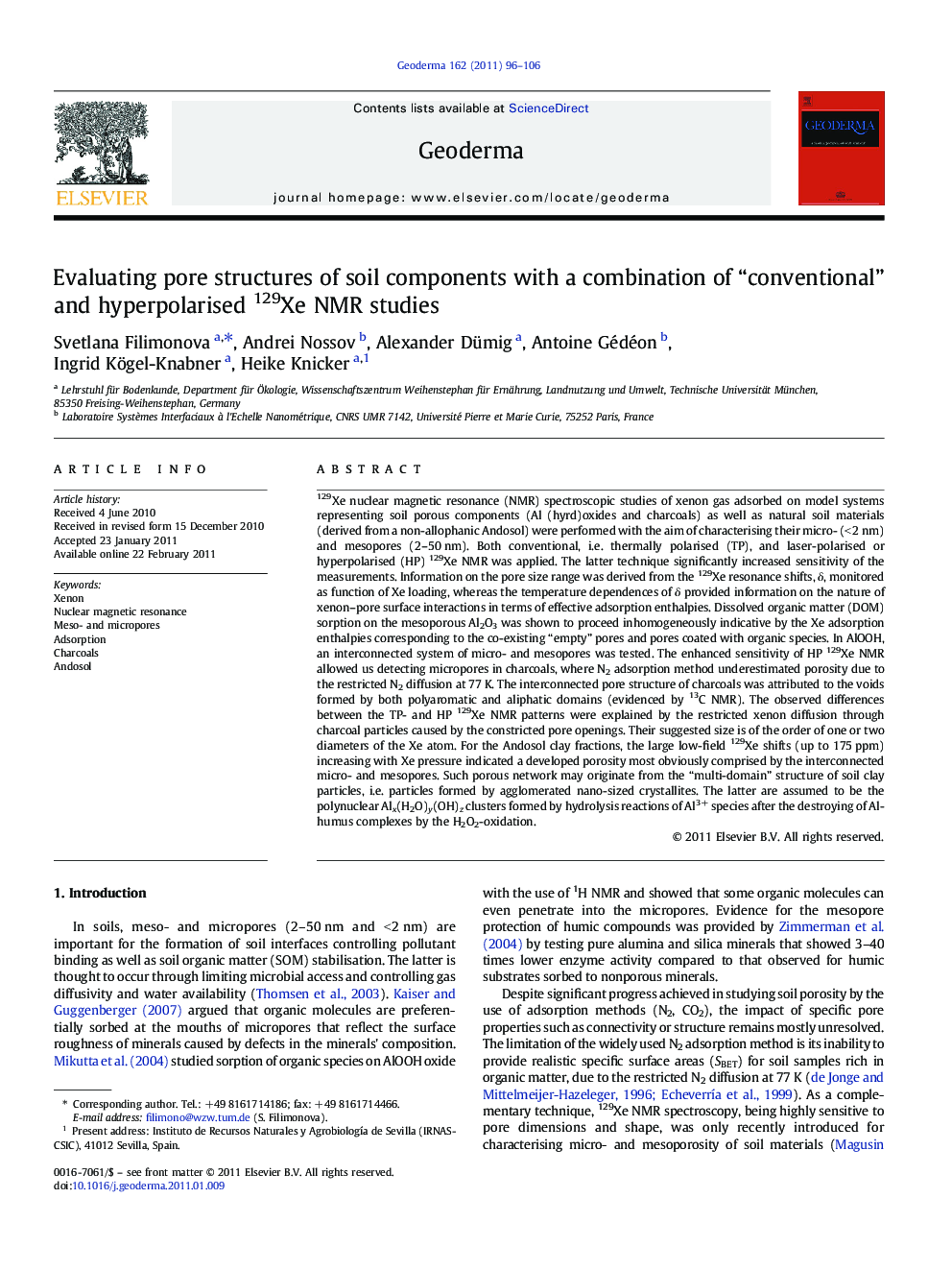| Article ID | Journal | Published Year | Pages | File Type |
|---|---|---|---|---|
| 4574115 | Geoderma | 2011 | 11 Pages |
129Xe nuclear magnetic resonance (NMR) spectroscopic studies of xenon gas adsorbed on model systems representing soil porous components (Al (hyrd)oxides and charcoals) as well as natural soil materials (derived from a non-allophanic Andosol) were performed with the aim of characterising their micro- (< 2 nm) and mesopores (2–50 nm). Both conventional, i.e. thermally polarised (TP), and laser-polarised or hyperpolarised (HP) 129Xe NMR was applied. The latter technique significantly increased sensitivity of the measurements. Information on the pore size range was derived from the 129Xe resonance shifts, δ, monitored as function of Xe loading, whereas the temperature dependences of δ provided information on the nature of xenon–pore surface interactions in terms of effective adsorption enthalpies. Dissolved organic matter (DOM) sorption on the mesoporous Al2O3 was shown to proceed inhomogeneously indicative by the Xe adsorption enthalpies corresponding to the co-existing “empty” pores and pores coated with organic species. In AlOOH, an interconnected system of micro- and mesopores was tested. The enhanced sensitivity of HP 129Xe NMR allowed us detecting micropores in charcoals, where N2 adsorption method underestimated porosity due to the restricted N2 diffusion at 77 K. The interconnected pore structure of charcoals was attributed to the voids formed by both polyaromatic and aliphatic domains (evidenced by 13C NMR). The observed differences between the TP- and HP 129Xe NMR patterns were explained by the restricted xenon diffusion through charcoal particles caused by the constricted pore openings. Their suggested size is of the order of one or two diameters of the Xe atom. For the Andosol clay fractions, the large low-field 129Xe shifts (up to 175 ppm) increasing with Xe pressure indicated a developed porosity most obviously comprised by the interconnected micro- and mesopores. Such porous network may originate from the “multi-domain” structure of soil clay particles, i.e. particles formed by agglomerated nano-sized crystallites. The latter are assumed to be the polynuclear Alx(H2O)y(OH)z clusters formed by hydrolysis reactions of Al3+ species after the destroying of Al-humus complexes by the H2O2-oxidation.
Research Highlights► 129Xe NMR spectroscopy shows perspectives in studying soil porous components. ► Inhomogeneous DOM sorption in mesopores followed from the Xe adsorption enthalpies. ► Constricted pore openings within the microporous network of charcoals were revealed. ► Enhanced porosity of non-allophanic Andosol is due to the “multi-domain” particle structure. ► Hyperpolarised 129Xe NMR is helpful for assessing the extent of pore attainability.
